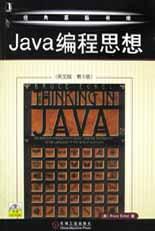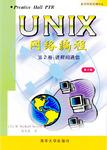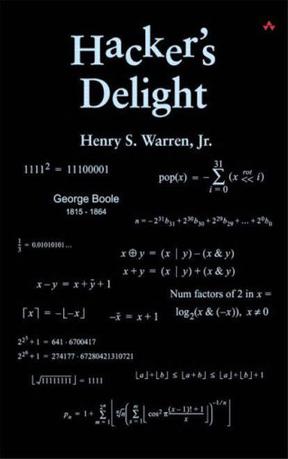-

Java编程思想
本书赢得了全球程序员的广泛赞誉,即使是最晦涩的概念,在Bruce Eckel的文字亲和力和小而直接的编程示例面前也会化解于无形。从Java的基础语法到最高级特性,本书能逐步指导你轻松掌握。 本书经典的Java介绍,完全针对Java1.4版本更新,并增加了许多新主题。350多个可运行的Java程序,15000多行代码。讲述Java的同时着得阐释面向对象原理。支持网站包括所有源代码、带注释的解决方案指南、评论以及其他资源。随书光盘包括可用于Windows、Linux和Mac的完整的Fundations for Java多媒体研讨教材。本书的全面性,适用于初学者;本书的深入性,适用于专家。随书光盘含有15个小时的Bruce Eckel演讲课程。 -

UNIX网络编程第2卷
UNIX网络编程:第2版(第2卷 进程间通信),ISBN:9787302038153,作者:(美)[W.R.史蒂文斯]W.Richard Stevens著;杨继张译 -

算法Ⅰ~Ⅳ(C++实现):基础、数据结构、排序和搜索
本书通过C++实现方案以简洁、直接的方式对书中的算法和数据结构进行表述,并向学生提供在实际应用中验证这种方法的手段。 本书广泛地论述了与排序、搜索及相关应用有关的基本数据结构和算法。覆盖了数组、链表、串、树和其他基本数据结构,更多地强调抽象数据类型(ADT)、模块化程序设计、面向对象程序设计和C++类。本书包括排序、选择、优先队列ADT实现和符号表ADT(搜索)实现,配有帮助学生学习计算机算法特性的1000多种新练习、100多个图表以及大量的程序例子。 Robert Sedgewick完全重定了他的著作,对它进行了充分的扩展和更新,涵盖了目前重要的算法和数据结构。Christopher Van Wyk和Sedgewick开发的新实现采用的是C++语言,这种实现不仅能简洁直接地表达算法,而且给编程者提供了实践的方法,以便在真正的应用中测试这些算法。 新的版本提供了很多新算法,而且对每个算法的解释也比以前的版本详细得多。新的版面设计以及详细、富有创意并且具有注释的插图,使本书的表达能力大大地提高了。第三版保留了将理论和实践成功混合在一起的特点,正是这一点,使Sedgewick的著作成为25万多名程序员无价的参考资源。 本书是全卷的前半部分,涵盖了基本的数据结构、排序算法、搜索算法以及它们的相关应用。虽然本书实质上可以用于各种语言的程序设计,Christopher Van Wyk和Sedgewick的实现都采用了C++类和ADT实现的自然对应。 本书的精彩内容包括: ·扩展了对数组、链表、字符串树及其他基本数据结构的介绍。 ·比以前的版本更中着重于抽象数据类型(ADT)、模块化程序设计方法、面向对象的程序 设计方法和C++类。 ·有关排序、选择、优先级队列ADT实现和符号表ADT(搜索)实现的算法,超过100个。 ·关于二项式队列、多路基数排序、随机化BST、发散树、跳跃表、多叉线索、B树、可扩充散列等,采用了新的实现。 ·关于算法的量化分析,是比较算法的依据。 ·1000多条新的练习,帮助读者学习算法。 无论是你初学算法,还是想找一本将最新C++经典算法和新算法融入程序设计的参考手册,你都会发现本书提供了丰富的有用信息。 -

C Interfaces and Implementations
Every programmer and software project manager must master the art of creating reusable software modules; they are the building blocks of large, reliable applications. Unlike some modern object-oriented languages, C provides little linguistic support or motivation for creating reusable application programming interfaces (APIs). While most C programmers use APIs and the libraries that implement them in almost every application they write, relatively few programmers create and disseminate new, widely applicable APIs. C Interfaces and Implementations shows how to create reusable APIs using interface-based design, a language-independent methodology that separates interfaces from their implementations. This methodology is explained by example. The author describes in detail 24 interfaces and their implementations, providing the reader with a thorough understanding of this design approach. -

Programming in Lua, Second Edition
Lua is the language of choice for anyone who needs a scripting language that is simple, efficient, extensible, portable, and free. Currently, Lua is being used in areas ranging from embedded systems to Web development and is widely spread in the game industry, where knowledge of Lua is an indisputable asset. "Programming in Lua" is the official book about the language, giving a solid base for any programmer who wants to use Lua. Authored by Roberto Ierusalimschy, the chief architect of the language, it covers all aspects of Lua 5---from the basics to its API with C---explaining how to make good use of its features and giving numerous code examples. "Programming in Lua" is targeted at people with some programming background, but does not assume any prior knowledge about Lua or other scripting languages. This Second Edition updates the text to Lua 5.1 and brings substantial new material, including numerous new examples, a detailed explanation of the new module system, and two new chapters centered on multiple states and garbage collection. -

Hacker's Delight
A collection useful programming advice the author has collected over the years; small algorithms that make the programmer's task easier. * At long last, proven short-cuts to mastering difficult aspects of computer programming * Learn to program at a more advanced level than is generally taught in schools and training courses, and much more advanced than can be learned through individual study/experience. * An instant cult classic for programmers! Computer programmers are often referred to as hackers -- solitary problem solvers engrossed in a world of code as they seek elegant solutions to building better software. While many view these unique individuals as "madmen," the truth is that much of the computer programmer's job involves a healthy mix of arithmetic and logic. In Hacker's Delight, veteran programmer Hank Warren shares the collected wisdom -- namely tips and tricks -- from his considerable experience in the world of application development. The resulting work is an irresistible collection that will help even the most seasoned programmers better their craft. Henry S. Warren Jr. has had a 40-year career with IBM, spanning the computer field from the IBM 704 to PowerPC. He has worked on various military command and control systems, and on the SETL project under Jack Schwartz at NYU. Since 1973 he has been in IBM's Research Division at Yorktown Heights, New York. Here he has done compiler and computer architecture work on the 801 computer and its several variants through PowerPC. Presently he is working on the Blue Gene petaflop computer project. He received his Ph.D. in Computer Science from the Courant Institute at New York University in 1980.